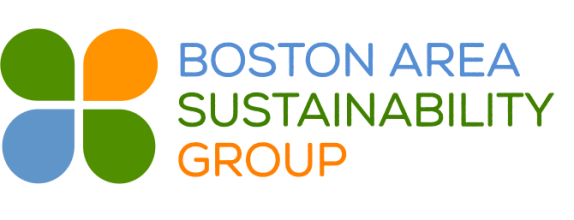By Jessica Halvorsen
At this month’s BASG event, we spent time learning and thinking about the intersection of two areas of large investment: buildings and human health. As Grey Lee, Executive Director of the MA US Green Building Council chapter, noted, changing how we build and operate buildings, which are among our biggest investments, is one of the most significant things we can do to make ourselves and our planet healthier. Americans spend about 90% of their time indoors2. Buildings accounted for 41% of US energy consumption in 20145. Once built, buildings remain in place and in use for a long time. The life span of the Bullitt Center, an ambitious, Living Building Challenge certified commercial building in Seattle (featuring not just low-flow, but composting toilets!), is projected to be about 250 years1. In fact, many of the buildings that currently exist will still be in use for decades as we transition to a low-carbon economy. Because of that, retrofits and ongoing maintenance of sustainable design features, as well as ever-greener new buildings, will be essential to making the changes we need to improve the environment. Green building and operating frameworks are among the most essential tools we have to measure progress toward a better built environment; the Living Building Challenge (LBC) may be one of the most idealistic and visionary ideas to help us get there.
It’s an ambitious but flexible and creative framework grounded in a simple question: What if? What if we did more good rather than less bad? What if buildings were like trees, and the city were like a forest, interacting to mutual benefit with its environs?
Given the urgency of our need to transform our economy in the face of climate change, I continued to think afterwards about an essential follow-up question: What’s the hook to accelerate the momentum behind the LBC and its mission?
Money has of course always been an important hook in any business endeavor, and by following the money through energy investments and upgrades, many building owners have made huge strides in both energy efficiency and savings.
Interestingly–and here comes the hook–recent changes in the LEED v4 standards as well as the growth of the Living Building Challenge indicate that the financial focus of green building is increasingly expanding to include the people in buildings, and their productivity and health. That seems ever more important when considering that the US spent 17.5% of GDP on healthcare in 2014, more than any other industrialized country (totaling more than $3 trillion), and costs rose 5.3% in 2014 alone4. Yet, when it comes to buildings — remember, buildings are one of the largest investments we make as a society — architects are still too often having to ask: “Can I please not put toxic chemicals in your building?” Through transparency via Health Product Declarations, screening for Red List chemicals, and thoughtful purchasing, customers and architects are increasingly making the built environment measurably healthier, but we can’t rest on our laurels yet. By broadly adopting LEED and LBC, we can also help make healthier environments the norm even in non-“green” buildings.
A recent Harvard study helps buttress (that’s an architecture joke there!) the business case by concluding that increased ventilation and reduction of volatile organic compounds (VOCs) in the workspace have a measureable and independent effect on the cognitive performance of the people that work there. In many ways the study merely reflects what many would consider common sense, but it’s still essential to have formal validation that air quality and fewer harmful chemicals in the built environment help people work better. That is an important hook when salary and healthcare costs are typically among a firm’s largest expenses.
No one has all of the answers to these complex issues yet, but it’s imperative that we continue to push for additional progress in green building, and that is why it was such an inspiration to hear from people steeped in this topic and using their creativity and expertise to let us see and hear for ourselves that we can live like trees and forests.
References:
- http://www.bullittcenter.org/
- http://archive.epa.gov/greenbuilding/web/pdf/gbstats.pdf
- https://www.cms.gov/research-statistics-data-and-systems/statistics-trends-and-reports/nationalhealthexpenddata/nationalhealthaccountshistorical.html
- http://www.eia.gov/tools/faqs/faq.cfm?id=86&t=1
- http://www.usgbc.org/articles/green-building-facts
- Harvard Study: http://ehp.niehs.nih.gov/wp-content/uploads/advpub/2015/10/ehp.1510037.acco.pdf

Wonderfully informative Jessica!
LikeLike